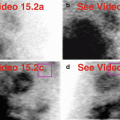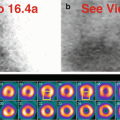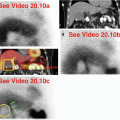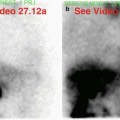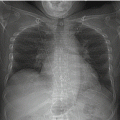and Vincent L. Sorrell2
(1)
Division of Nuclear Medicine and Molecular Imaging Department of Radiology, University of Kentucky, Lexington, Kentucky, USA
(2)
Division of Cardiovascular Medicine Department of Internal Medicine Gill Heart Institute, University of Kentucky, Lexington, Kentucky, USA
Electronic supplementary material
The online version of this chapter (doi: 10.1007/978-3-319-25436-4_8) contains supplementary material, which is available to authorized users.
The field-of-view of SPECT MPI includes red marrow-containing bone such as the sternum, the ribs, the clavicles, the spine, and the upper extremities (Mohr et al. 1996; Williams et al. 2003). While slight skeletal uptake can be normal, many different skeletal conditions might be manifest on SPECT MPI (Table 8.1).
Table 8.1
Differential diagnosis of “hot” and “cold” imaging findings related to the skeleton
Organ system | “Hot” finding | “Cold” finding | References |
|---|---|---|---|
Skeleton | Anemia/thalassemia Fracture/sternotomy Osteomyelitis Gaucher disease Paget disease Myelofibrosis/myelodysplastic process Multiple myeloma Osteosarcoma/sarcoma Neoplasm, metastasis | Neoplasm, metastasis | Caner et al. (1992) Chamarthy and Travin (2010) Fisher et al. (2000) Gowda et al. (2006) Mariani et al. (2003) Maurea et al. (1995) Mohr et al. (1996) Onsel et al. (1996) Shih et al. (2005) Soderlund et al. (1997) Williams et al. (2003) |
The orientation of the heart relative to the shape of the rib cage may suggest skeletal deformity such as kyphosis, scoliosis, kyphoscoliosis, or pectus carinatum/excavatum (Fig. 8.1). The image reconstruction process generally overcomes such unusual cardiac displacements or distortions. Correlation with physical examination and other imaging can be clarifying.


Fig. 8.1
Pectus excavatum deformity. There is displacement of the heart into the left chest (a) due to pectus excavatum deformity (b–d). Correlation with other imaging (b–d) clarifies the MPI findings. The radiographic appearance is characteristic: on the frontal radiograph (b), the right heart border is indistinct, the heart displaced to the left, and the ribs more oblique than usual; on the lateral (c), the anterior-posterior dimension is narrowed with a concave sternal configuration. These anatomic relationships are well demonstrated by CT scan. The tunneled catheter seen on the radiographs (b, c) is used for dialysis.(a) Stress raw projection images (Video 8.1a, frame 1), 99mTc sestamibi. (b) PA chest radiograph. (c) Lateral chest radiograph, depressed lower sternum (yellow lines). (d) CT image through lower chest, depressed lower sternum, and narrow anterior-posterior distance (yellow line)
Although relatively uncommonly apparent on SPECT MPI, incidental benign skeletal conditions will typically appear “hot.” They include chronic anemia (Figs. 8.2 and 8.3), fractures (Fig. 8.4), myelofibrosis, and Paget disease (Gowda et al. 2006; Shih et al. 2005). Other nonneoplastic bone lesions include post-sternotomy and osteomyelitis (Chamarthy and Travin 2010; Onsel et al. 1996).




Fig. 8.2




Diffusely “hot” sternum and ribs silhouetted against adjacent “cold” pleural effusions. A 57-year-old male has anemia associated with cirrhosis, bilateral pleural effusions, and ascites. The sternum and ribs are well seen against the pleural effusions (a–c). The fixed inferior and inferolateral wall perfusion defects on non-AC images, due to the left pleural effusion and ascites, normalize with attenuation correction (d); there is normal wall motion and wall thickening (e). Correlative chest radiograph (f) shows bibasilar opacification due to left-much-greater-than-right pleural effusions; note the “dense” abdomen due to ascites.(a) Rest raw projection images (Video 8.2a, frame 1), 99mTc sestamibi. (b) Stress raw projection images (Video 8.2b, frame 1), 99mTc sestamibi. (c) Stress raw projection image (Video 8.2c, frame 25), 99mTc sestamibi, sternum and ribs (yellow lines). (d) Stress/rest processed SPECT images (VLA) (stress/rest without AC (top panel) and stress/rest with AC (bottom panel), inferior and inferolateral defects (yellow ovals on representative images). (e) Stress and rest gated SPECT images (Video 8.2d, frame 1) (SA, VLA, HLA). (f) AP portable chest radiograph
Stay updated, free articles. Join our Telegram channel

Full access? Get Clinical Tree




